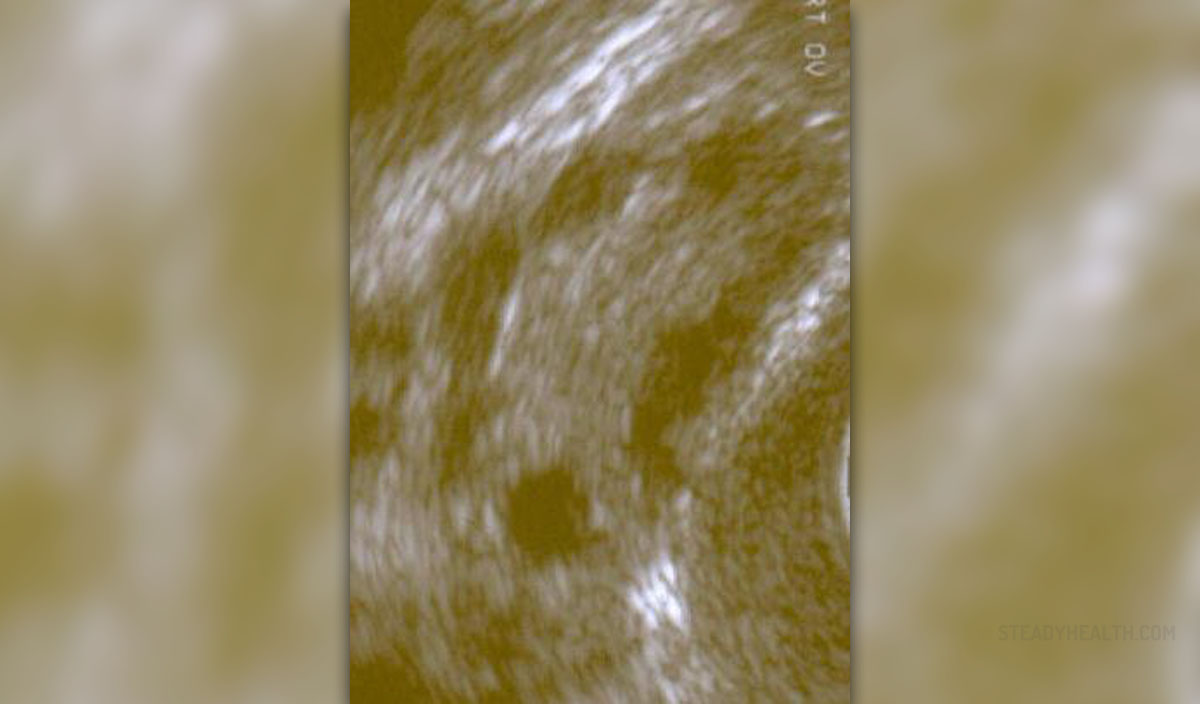
Polycystic ovary syndrome is one of the most common female endocrine disorders. It is estimated that 5 to 10 percent of all women in their reproductive years, suffer from polycystic ovary syndrome. This condition is also considered to be one of the leading causes of female infertility. The ovaries of the affected women usually appear enlarged and have a number of small cysts located on the outer edge. This condition is usually recognized by menstrual abnormalities and other symptoms of endocrine disorders such as excess hair growth, acne or obesity. Unfortunately, most of the women are becoming acquainted with this health problem once they experience serious difficulties in becoming pregnant.
Symptoms of polycystic ovary syndrome
Polycystic ovary syndrome can be present in any age during the reproductive years. For some of the women, first symptoms are visible as soon as they begin having periods. For others, symptoms develop later during the years. Polycystic ovary syndrome has many different signs and symptoms and it normally manifests differently in different patients. The most prominent symptom is menstrual abnormality characterized by menstrual cycles longer than 35 days, less than eight periods per year, lack of menstruation for four months or longer and prolonged and heavy periods.
Women with polycystic ovary syndrome can also have elevated levels of male hormones, known as androgens. Hormonal disturbances usually manifest as excess facial and body hair, adult acne and male-pattern baldness.
Enlarger ovaries covered with small cysts are another strong, but yet not sufficient, symptom of polycystic ovary syndrome. In order to be diagnosed with polycystic ovary syndrome, women should also have abnormal menstrual cycles or signs of androgen excess.
Complications of polycystic ovary syndrome
One of the most common conditions associated with polycystic ovary syndrome is infertility. Women suffering from this condition have infrequent ovulations or completely lack ovulation, which makes it very hard to get pregnant. Obesity is another frequent problem that affects about half of the women with polycystic ovary syndrome. In addition, most of these women are insulin resistant, which may result in high blood sugar and type 2 diabetes.
Treatment for polycystic ovary syndrome
Treatment for polycystic ovary syndrome is usually tailored for each patient individually. The treatment addresses patients’ main problems such as high insulin levels, infertility, hirsutism or acne, irregular menstruation, etc. Treatment always involves regular checkups, physical examinations and serious lifestyle modifications. Some of the women will start using low-dose birth control pills that contain a combination of synthetic estrogen and progesterone in order to regulate their menstrual cycle. If a woman is trying to get pregnant, she will probably need a medication to induce ovulation. If all of the other methods fail, doctors may suggest a surgery known as laparoscopic ovarian drilling.

















Your thoughts on this
Loading...